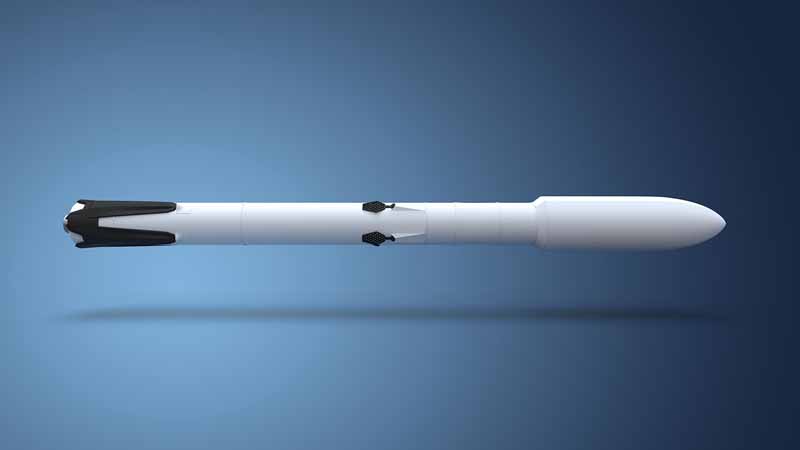Past, Present, and Future of Reusable Rockets — Innovation Propels Us Into New Frontiers
Reusable rockets have revolutionized access to space, reducing both the costs of access and the CO2 footprint of launches. Major entrepreneurial developments are to be expected in the coming years, including those from familiar frontrunners SpaceX and Blue Origin as well as new innovations from Virgin Galactic, ISRO, and Arianespace.
Understanding the technology, its financial and environmental impacts, and their promising applications for space tourism, power generation, communications, and materials development, all hint at what’s to come.

December 2015, Vandenberg Air Force Base, California. SpaceX’s Falcon 9 makes its successful return, the first-ever reusable rocket. Since then, recovering SpaceX rockets has become routine, but this hadn’t been the case during the early decades of spaceflight.
All rockets, satellites, and space probes until that day had been single-use items. The only objects that returned to our planet were human-carrying space capsules or sample canisters like Stardust (1999-2006) or Hayabusa (2005-2010), with the exception of the US Space Shuttle (1970s-2011) and the Soviet Union Buran (1980-1988), which had envisioned fully reusable yet too expensive and complex to operate spaceplanes.
Since 2012, several companies have been working on projects and prototypes for orbital and suborbital reusable spacecraft. SpaceX began developing what would become the Falcon9 and Falcon Heavy that same year. Blue Origin created the first VTVL rocket, New Shepard, in 2015 and managed to reach space by passing the Kármán line (62 mi) and returning for a propulsive landing. Both companies are working on the next generation of vehicles (Starship and New Glenn, respectively), while Virgin Galactic, ISRO, and Arianespace also have suborbital projects in development.
SpaceX CEO Elon Musk has said that reusable rockets can reduce the cost of access to space by a factor of a hundred. We’re already reaping the benefits of this technology, with satellites ridesharing into orbit cheaper and faster than ever. And still, space flight is at its infancy — and the best is yet to come.
Biggest Players
SpaceX
SpaceX is definitely making (regular) strides in reusable spacecraft. Following their Falcon9 success, the company is now involved in several missions. These include Starlink, a network that will offer high-speed internet access across the globe (completed October 8), and Saocom 1B (completed September 20), the first polar launch ever from the East Coast and the first from Florida in decades.
The Falcon 9 reusable two-stage rocket completed 93 launches and 54 landings. The Falcon Heavy, the world’s most powerful rocket by a factor of two, has executed seven landings and four re-flies. With its 64 metric tons capacity, the rocket uses nine nine-engine cores (27 Merlin engines) to produce more than 5 million pounds of thrust.
One of SpaceX’s most expected vehicles is, however, the Starship. This spacecraft and super-heavy rocket is a fully reusable transportation system that can carry both cargo and crew to Earth orbit, the Moon, Mars, and beyond.
Blue Origin
Blue Origin is the venture of Jeff Bezos, the founder of Amazon. The company has developed a suborbital rocket called New Shepard (named after Mercury astronaut Alan Shepard, the first American to go to space), designed to take astronauts and research payloads past 62 miles altitude. The journey takes only 11 minutes, and the rocket uses fins, drag breaks, and a BE-3 liquid rocket engine to land.
Blue Origin is also working on Blue Glenn (named after astronaut John Glenn), a big reusable launch vehicle capable of carrying people and payloads to Earth orbit and beyond. Its first stage is built for a minimum of 25 missions, making it competitive for a variety of launch markets. The company is also developing Blue Moon, a flexible lander that can deliver astronauts, large rovers, habitats, and ascent stages to the lunar surface in order to enable a sustained human presence on the satellite.
The company leads the Human Landing System (HLS) National Team alongside Lockheed Martin, Northrop Grumman, and Draper. The team has recently completed its first System Requirements Review (SRR) and is ready to move forward working with partners, independent experts, and NASA to return Americans to the Moon.
Other Companies
Virgin Galactic’s reusable spaceflight system is called SpaceShipTwo. The company is developing a new generation of space vehicles that will focus on private passenger-carrying commercial services. Its operational hub at New Mexico’s Spaceport America is the first purpose-built commercial spaceport and will run a regular schedule of spaceflights for private individuals and researchers.
ISRO, the Indian Space Research Organisation, is also working on reusable launch vehicle technology. Their RLV-TD completed its first successful atmospheric test flight in May 2016, and their latest model is expected to land on the ground in November or December 2020. Somewhat similar to the USA's space shuttle, the vehicle will be able to put satellites into orbit and return for the next mission.
The European Arianespace is also planning on making its future rockets more competitive. Their new “acceleration platform” will develop reusable launchers and an engine called Prometheus, which uses oxygen and methane as a propellant. The products of this type of fuel are more environmentally friendly than many other alternatives, making the rocket particularly attractive.
The Future of Reusable Rockets
As Musk stated, reusable rockets can significantly reduce the cost of launches. The CEO had promised that a Falcon 9 launch would cost just $62 million — and yet Space Force’s two next launches had a price tag of only $52.7 million combined. This is perhaps the main reason why the rocket propulsion market is one with increasing government support and growing investment. Its revenues are projected to surpass $6 million by 2027 at an 8% compound annual growth rate (CAGR) for the period 2020 to 2027.
Reusable rockets are, in general, safer, more cost-effective, and allow for quick deployment of much-needed satellite infrastructure. They might accumulate wear, but they don’t get new manufacturing defects between flights.
In terms of environmental impact, these spacecraft can produce many different emissions (CO2, water vapor, carbon soot, chlorine, etc.), which generally means a hefty footprint. A lot of conventional rockets are propelled by liquid hydrogen fuel that produces clean water vapor exhaust (Blue Origin plans to use this type of fuel). Although the production of hydrogen itself can cause significant carbon emissions, rocket launches are nonetheless relatively infrequent. However, SpaceX’s Falcon uses kerosene. This could become a problem if launches are as frequent as promised — one every two weeks.
There are currently no regulations on rocket emissions as, so far, the most important criteria have been cost and performance. Hopefully, companies will follow the example of ArianeGroup, which is developing a completely carbon-neutral rocket that runs on methane produced from biomass. With the advent of frequent rocket launches by many different companies, we hope reducing costs will mean that we can address the environmental impact.
About the Author

Yisela Alvarez Trentini is an Anthropologist + User Experience / Human-Computer Interaction Designer with an interest in emerging technologies, social robotics, and VR/AR.
Startup Resources
- Learn more about Startups
- Visit the TRUiC Business Name Generator
- Check out the TRUiC Logo Maker
- Read our Business Formation Services Review
- Find Startup Ideas
- Explore Business Resources
Form Your Startup
Ready to formally establish your startup? Click below to read our review of the best business formation services!
Best Business Formation Services